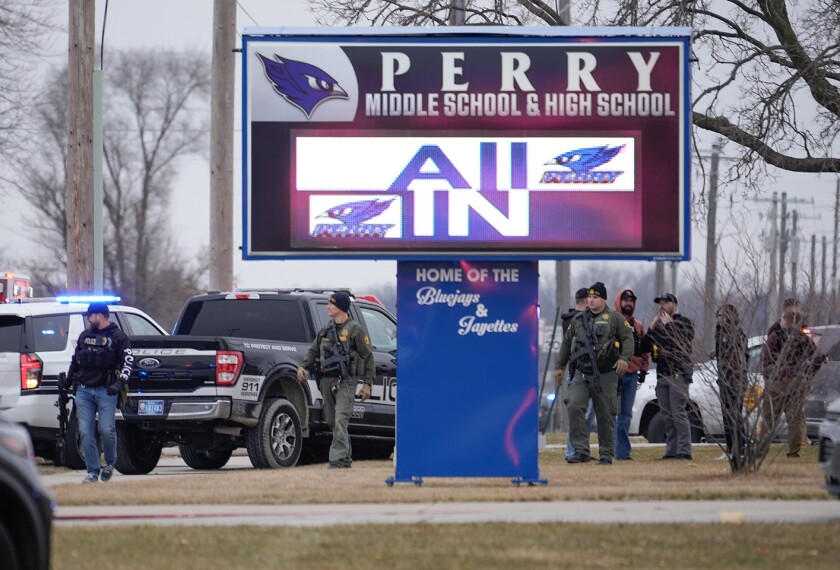Schools are reporting less violent crime and drug use at most grade levels, the latest federal safety data show, but some key student supports have also declined.
Sixty-seven public schools reported a violent crime like assault on campus in 2021-22, down from 71 percent of schools in 2017-18, the last full year before the pandemic. Nonviolent crimes like thefts fell 6 percentage points during the same period. However, 3 percent of public schools reported hate crimes in 2022, up by 1 percentage point from the prior two years.
The data come from the federal School Survey on Crime and Safety, a nationally representative study of 4,800 public K-12 schools. The most recent survey was given in the first half of 2022, still during the pandemic but at a time when most schools had returned to in-person instruction.
NCES found less violent and nonviolent crime across elementary and high schools—but not for middle schools. Ninety percent of middle schools reported at least one violent incident in 2021-22.
Middle schools also were significantly more likely than other schools to report at least weekly bullying incidents—28 percent reported traditional bullying and 37 percent reported cyber-harassment—compared to other grade levels.
Deanne Swan, NCES senior technical adviser on the crime survey, said middle school usually has higher rates of social and discipline problems than other grades. Students have more opportunities for friction and confusion as they navigate more varied and challenging classes—as well as new peer pecking orders.
“This is when a lot of social groups are starting to be formed. Kids are hitting adolescence, so they’re figuring out who they are and where they belong,” Swan said. “By the time they’ve gotten out of middle school into high school, a lot of [students] have found their path forward.”
By contrast, high schools reported fewer criminal incidents in 2021-22 compared to 2017-18, particularly for drug offenses. Illegal and prescription drugs and alcohol use or distribution all declined over that period.
School supports
At least 9 out of 10 public schools provided social-emotional learning, behavior interventions, and programs or instruction aimed at improving school climate in 2021-22. Nearly 6 out of 10 schools also used restorative discipline strategies, which focus on repairing harm and building respectful relationships, rather than removing students from class for misbehavior.
However, the survey data also suggest identification and services for troubled students are no more available than they were before the pandemic.
Experts from the U.S. Surgeon General, to the American Academy of Pediatricians and the National Academies of Science have warned that rising rates of anxiety, depression, and other child and adolescent mental health problems have become a public health emergency.
In the last few years, federal and state agencies have dedicated millions of dollars for schools to help students recover mentally and emotionally from disruptions during the pandemic.
Fewer than half of schools evaluated students for mental health problems in 2021-22, and only 38 percent of schools provided services for students who had diagnosed disorders. That’s down significantly from the prior year and flat compared to 2017-18. By contrast, 9 out of 10 public schools offered more academic supports like individual mentoring, tutoring, or coaching, in 2021-22.
Chris Chapman, an NCES associate commissioner who leads the center’s sample survey division, said it’s not clear why mental health services have fallen back to pre-pandemic levels.
Staffing and funding challenges remain the most common barriers to school-based mental health services, noted by 39 percent of schools in 2021-22. Yet schools seem on different trajectories in meeting the two challenges.
Following years of federal and state recovery grants to expand school-based mental health, 13 percentage points fewer schools said they didn’t have enough money for mental health support in 2021-22 than in 2017-18.
Still, schools faced challenges in finding mental health staff. Just as many schools reported difficulty finding licensed mental health staff in 2017-18 as in 2021-22, when the average school psychologist served more than twice as many students as the National Association of School Psychologists’ recommended ratio of 500 to 1.






